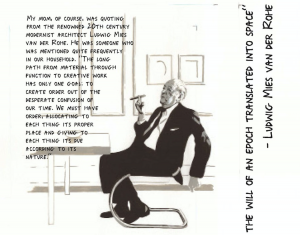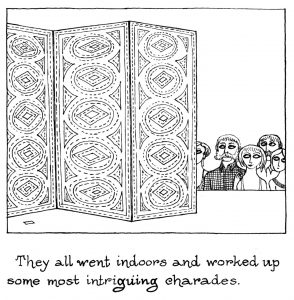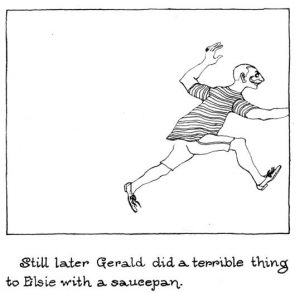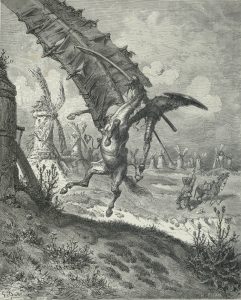I think a wordless novel was the perfect format for telling the story of The Arrival. It is a story about immigration and the struggle to communicate and connect in a new place, where people speak different languages and come from different backgrounds. In using solely images to tell his story, Tan found a way to communicate in a language that can be read by almost everyone, no matter where you come from in the world.
The idea of art as a universal language seems to be one of the themes of the book. When the protagonist first arrives in the new city, he does not speak the language, so he communicates largely through drawing in his notebook and showing his sketches to those around him. He uses this method to acquire the necessities of survival – food and shelter. This shows how important art can be as a means of communication.
In using a language that everyone can understand, Tan also shows that the story of the immigrant is universal. Being from near New York City, I saw that as the city in the book, with the protagonist getting off the boat and getting his ID on Ellis Island, and the big statues he sees as the Statue of Liberty. However, it seems like this city could really be anywhere. The fact that it lends itself to being interpreted as any number of large cities reinforces the universality of the narrative.






